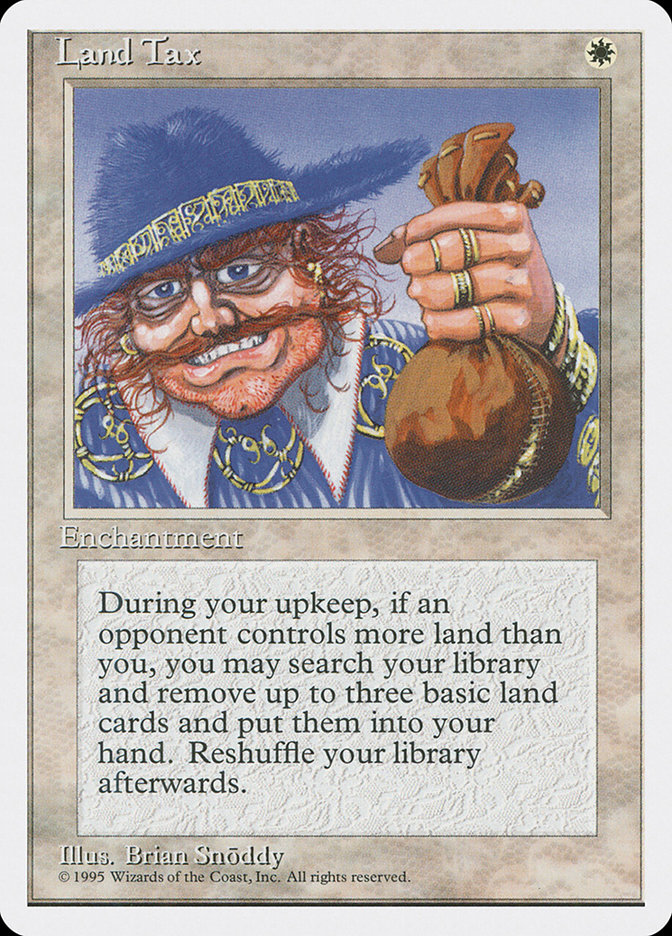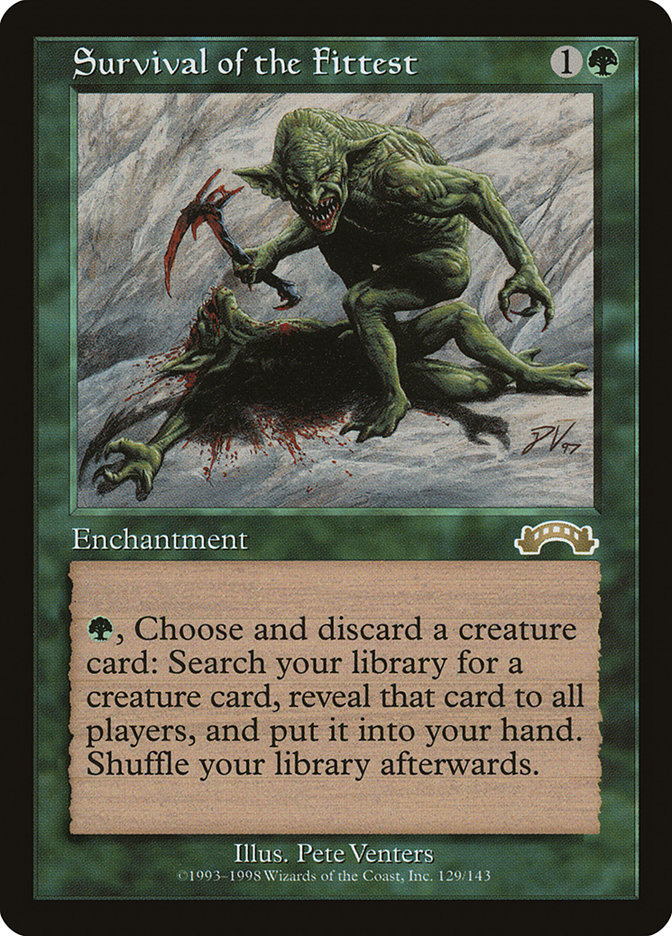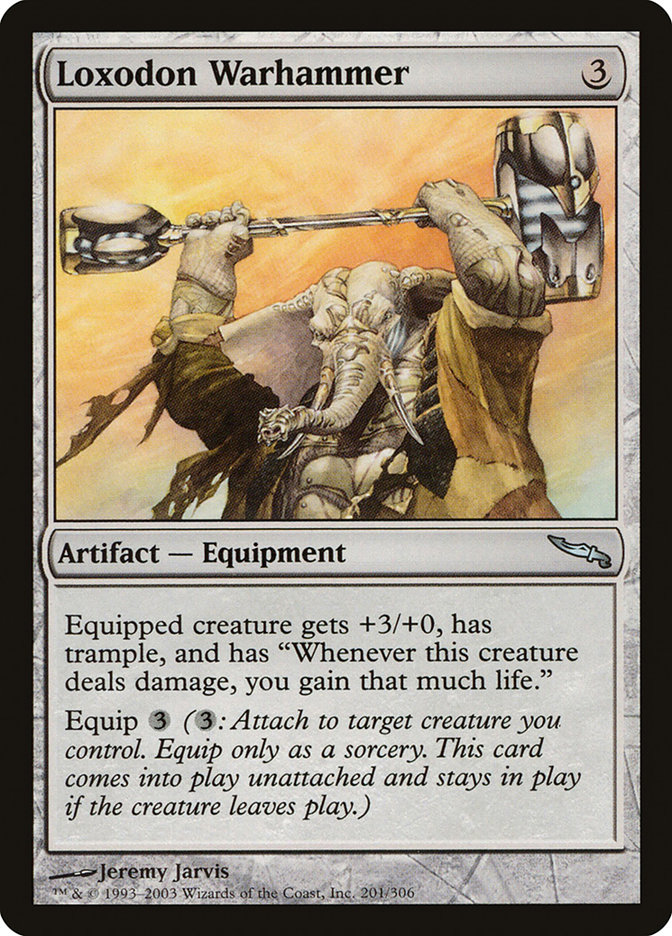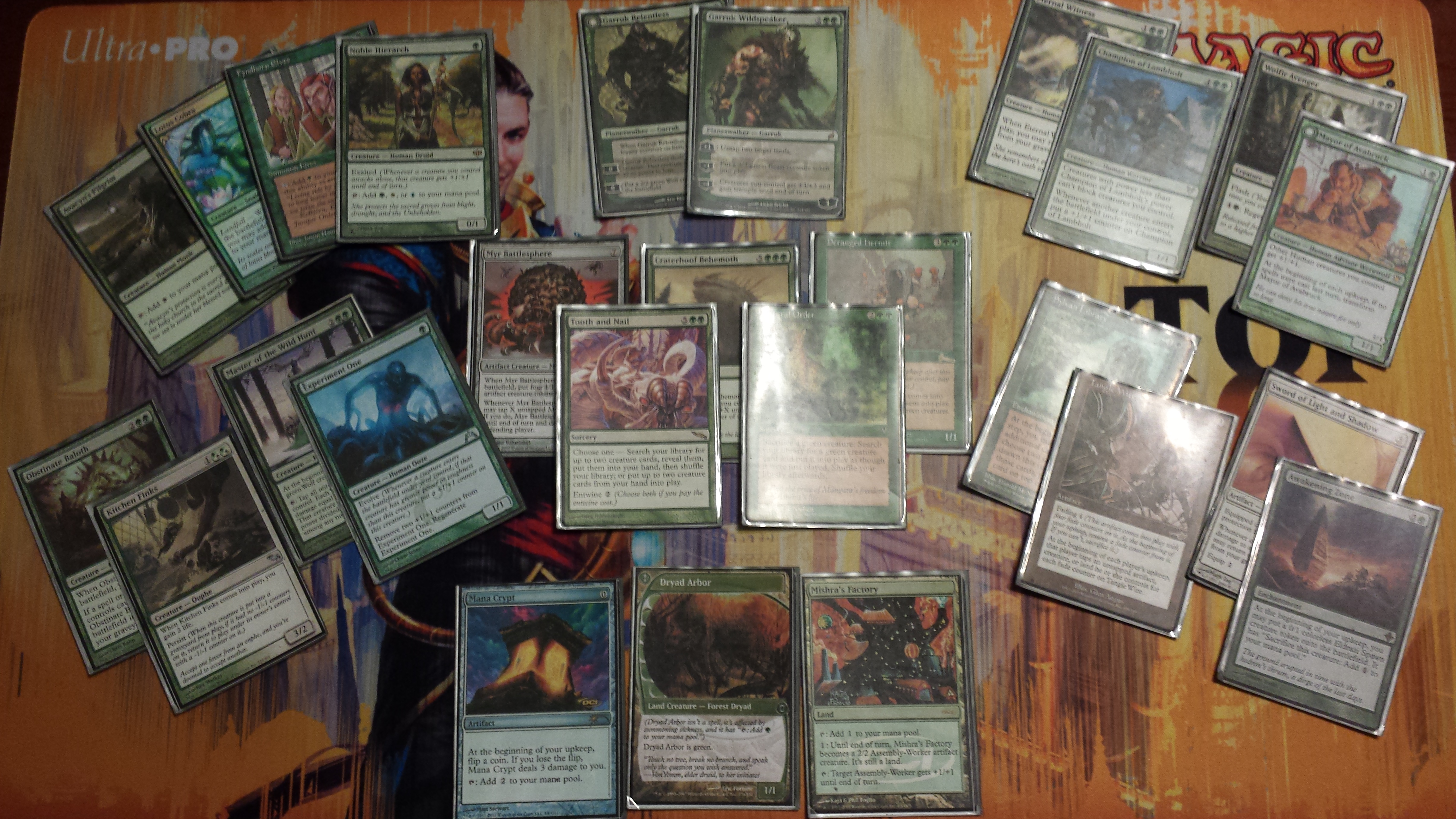 A Halloweened-themed Cubers Anonymous? No, but the timing sure is convenient. Let’s talk about fear! More specifically, something that is unfortunately rampant in Cube design- fear of change.
A Halloweened-themed Cubers Anonymous? No, but the timing sure is convenient. Let’s talk about fear! More specifically, something that is unfortunately rampant in Cube design- fear of change.
I want to preface this article by saying up-front that all of this article is going to be extremely geared towards making your Cube as enjoyable as possible for your group, draft-wise and game-wise. This is often the case for my articles, but today especially so because we a Cube is not allowed to fulfill its potential while worrying about nostalgia and pet cards filling the ranks. I don’t mean to say that these types of cards don’t have a place, but as newer (and from a design and power-level standpoint, better) cards continue to replace older, less effective cards, there are increasingly going to be times where you’ll be faced with the proposition of cutting a card that has existed in your Cube for some time.
In short, we’re going to tune your Cube via survival of the fittest by cutting Survival of the Fittest.
In the Pipe, Five By Five
There are three things a well-tuned Cube needs. Anyone care to guess what they are?
.
..
…
Time, money, and power.
The first two are obvious to any Cube owner. Doing anything well takes time, including great Cube design. Magic cards are expensive, grass is green, the sun is hot, etc etc. And power? I don’t mean power with a capital P like Black Lotus and friends. I’m talking about willpower. The willpower to change how you feel about something in your Cube, be it a card, and archetype, or even an entire color. It seems easy to say you have the power to make change, but who are you really trying to convince?
Go look at your Cube list (and go ahead and put it into Cubetutor.com while you’re at it) and tell me if you see any of these cards:



Think about how you felt about these cards when you first added them to your Cube (most of us in our initial list) and how you feel about them now that you’ve had tons of drafts and games with them. Keep in mind that each of these cards were considered the top of their respective classes not too long ago. All three of these cards were well-loved by Cubers for their power and history. And now (in my humble opinion of course) each has become dramatically less powerful as Magic evolves and Cube design moves towards combat interaction, efficient removal, and planeswalkers.
Think of Cube changes as muscles; if you don’t use them, they’ll become weak and untuned. You should always be looking to find the perfect combination of cards for an archetype, identify the best curve for the decks that are drafted most often, and making sure that a certain color or strategy isn’t dominating the others.
Rookie Mistake, Hate to See It
My theory on working towards the best Cube is this: every single card is on the chopping block, and every single card has to impress me to keep its spot in the Cube. These are the things I look for:
1) How often is this card drafted in the first twelve picks?
This doesn’t necessarily doom a card to dropsville, but repeat offenders can find themselves riding the pine for a bit while a fresher card gets a shot. A good example of a card like this in my Cube that isn’t near cutting is Soltari Trooper. Even though it is often late in drafts, it very rarely finds itself in the next category. This is the easiest way to filter through cards that don’t belong – if a card hits this category over fifty percent of the time you draft in a month, you should be prepared to make a swap. A simple “Hey, did anyone draft ?” Most often people don’t mind sharing that cards were drafted as chaff.
This is also the quickest way to review newer cards, especially when you have a small number of cards to directly keep track of. If a new card isn’t getting drafted even half the time in its first five or so drafts, it probably can be cut.
I always like to target drafting new cards so I can get an accurate representation of them in a draft, and this is the most direct (but slowest) way to get data. This probably isn’t news to any Cube owner, but if you are attempting to draft an archetype that you feel a new card should go in and you’re not interested in the card, that may be all you need to know.
2) How often does the card not make main decks?
These two categories often link together to help find unplayable cards. The cards that appear in this category are the sneaky-bad cards, as often a card will continue to be drafted higher than other subpar cards but still not end up getting played. From my short list of cards in the first section, both Survival of the Fittest and Land Tax continued to be drafted before the end of the pack but found their way into decks less and less over time.
Now this doesn’t necessarily mean that these cards deserve cutting, but that you should temper your expectations on how they actually play. I’ve talked about Land Tax and Survival of the Fittest here and in other articles enough that I don’t need to keep bringing them up, but regardless, they’re the poster children for this category.
If you’ve decided you want your Cube to have some strictly sideboard-only cards (like the Magic Online Cube list) then this becomes a little bit trickier. Those cards are almost never drafted outside of the last three picks unless a pack is color-dead for a drafter much sooner than that. Make sure you note which cards you’ve added to your Cube in hopes they’ll be helpful sideboard cards, and pay attention to how often those cards are actually sided in. The reason this is tricky is fairly obvious – you have to continually chase information during and after the matches for cards that may have never had a chance to be boarded in. Celestial Purge is an obnoxiously powerful card against black and red, but if the player that is boarding the Purge never plays against those two colors, you’ve lost a whole draft’s worth of data on a card by virtue of the card’s narrowness.
Now of course, once you start to look for sideboard card performance you can start evaluating how often those types of cards are useful as a whole. More importantly, you can look for whether or not they make enough positive impact with their infrequent use as a card that could be a card that makes a main deck over 5% of the time. For my Cube experience, I want my drafters to have access to cards that support more archetype even though they may be narrower than cards than never make main decks but fit in every sideboard based on color and draft position.
As an aside – this is the main reason I strongly dislike sideboard-only cards in Cubes. They require absolutely zero skill to draft and can dramatically swing games based on them falling into your lap from a pack completely strapped of playable cards. You just have to be sitting in a seat that the card happens to land on in the last few picks, and be able to access that color. Flashfreeze and the like aren’t good Cube cards because no one wants them in their main deck and because the person that drafted it probably happened into sitting in the seat where Flashfreeze was their 45th pick in the draft and they’re splashing blue. I’d rather work to make archetypes better in my Cube in general than try to weaken other ones with direct hate cards.
3) What kind of feedback do you get from your playgroup about this card?
My favorite question to ask to find the answer I’m looking for is “How did do for you?” Very open ended, and you’ll get to hear more about the bad cards than the good ones. If someone gives a short positive answer (“How was Jace Beleren?” “Eh, it was fine”) you don’t need to ask much more about the card, as the person answering the question probably thinks the card did what it was supposed to do. Once you hit a card that performed below expectations, you really start to hear what you’re looking for.
“How did Masticore do for you?”
“Well my deck had trouble keeping it in play since I didn’t want to pitch cards other than lands to it, I found myself blocking and regenerating more than anything else, and I couldn’t really cast many spells since I had already committed so many cards to keeping it around.”
Bingo.
The First Cut is the Deepest
I hate to rail on my old friend Masticore, but it’s come a long way from the flavor text on Deep Analysis. And even though you have such fond memories of the sunny afternoons you two spent playing frisbee in the park, it’s time to put him out to pasture. You’ve identified that the card as underperforming, a change needs to be made. There is only one problem.
It’s tough to cut your foil, Korean, Richard Garfield-altered Masticore and go to sleep at night. You just don’t think you can do it.
This is where The Fear creeps in. You’ve come to a crossroads at where you want your Cube experience to head and you have to decide if you want your Cube to be the best drafting experience it can be, or if aged relics will continue to paint the walls of draft sideboards like a dusty mausoleum.
I will be the first to admit the difficulty. You’ve spend both time and money getting your Cube as beautiful as it is, and now some of the cards you’ve tracked down are past their prime and no longer fit. And yet I sit here and tell you to remove some of those cards, in the name of a draft experience?
Yes, that is what I’m doing. Let go!
Most of my readers know that early last year, my Cube was stolen from me at Grand Prix Baltimore. Since then, I’ve rebuilt my Cube entirely of proxies, and have enjoyed full-measured willpower that would have been more difficult had my original Cube still been intact. I don’t mean to say it was a 360 degree turnaround, as I was still able to cut cards despite their meaning to me personally (Lightning Angel) or their value on the secondary market (Judge Foil Gaea’s Cradle). But once the cards weren’t real, you could have called me the butcher I cut cards so willingly.
Now I’m in no way advocating that you sell your Cube and turn it into a box of proxies. Had my Cube not been stolen from me, I would still be pimping it out as much as I possibly could. What I do recommend is proxying cards before you make the decision to add a card to your Cube permanently so that you don’t end up spending extra cash on cards that don’t make the cut after the new-card factor wears off. This is especially important when you don’t have as much expendable income as others, blow your money on what you think are the best ten Cube cards in a new set in foil, then miss out on the eleventh card which ends up being better (and way more expensive) than most of the rest!
That New New
So how do we go about finding replacement for all of these cards we’ve cut?
Since Scars of Mirrodin, I keep a log of my very immediate, initial reactions of which cards are Cube playable. If you’ve been a reader for a while, you can go check out my review articles as I do tend to lay things right out there. This is an important tool for me as I can go back and look at what cards I initially pegged and then didn’t try, and see if there are any hidden gems among the cards that I missed the first time around.
At this point, it may seem like I’m advocating cutting old cards for newer cards, and that isn’t necessarily true. The sad and harsh truth is newer expansions have more to offer for Cubes than older ones, and the percentage of cards that are Cube-worthy are much higher in the last five or so years than the previous 15. I do enjoy finding older cards that help new archetypes work (I’ve recently added Goblin Bombartment and Phyrexian Tower to my Cube for the first time) but it does require a lot more searching through old sets and other Cube lists. A good trick of mine is to find large Cube lists online (720 cards and more, 540 cards and more if you have a small Cube) and see if there are any cards they have that you missed due to Cube size that they have in their Cube lists.
As I’ve talked about before in my Back to Basics article, I’ve set up color-paired archetypes in my Cube where each cards fits into at least one category (most cards fit in several). List out the archetypes in your Cube and see which ones need help in curve and physical numbers. If you’ve noticed that RG Aggro hasn’t been doing so hot in the last six months, I’d check out how much support you’re really giving that decks. Don’t be afraid to slightly mess with total numbers for categories (like cards per color) in favor of allowing for archetypes you’re attempting to strengthen. It’s okay if green has 51 cards and blue has 49! I promise your drafters won’t notice.
I hope these words can encourage you to take the leap and makes changes that need to be made for the health of your Cube! I’d love to hear specific examples in the comments about finding the willpower to make those tough cuts!
Draft my Cube on CubeTutor.com!
@JParnell1 on Twitter
Official Facebook Cube Drafting Page

